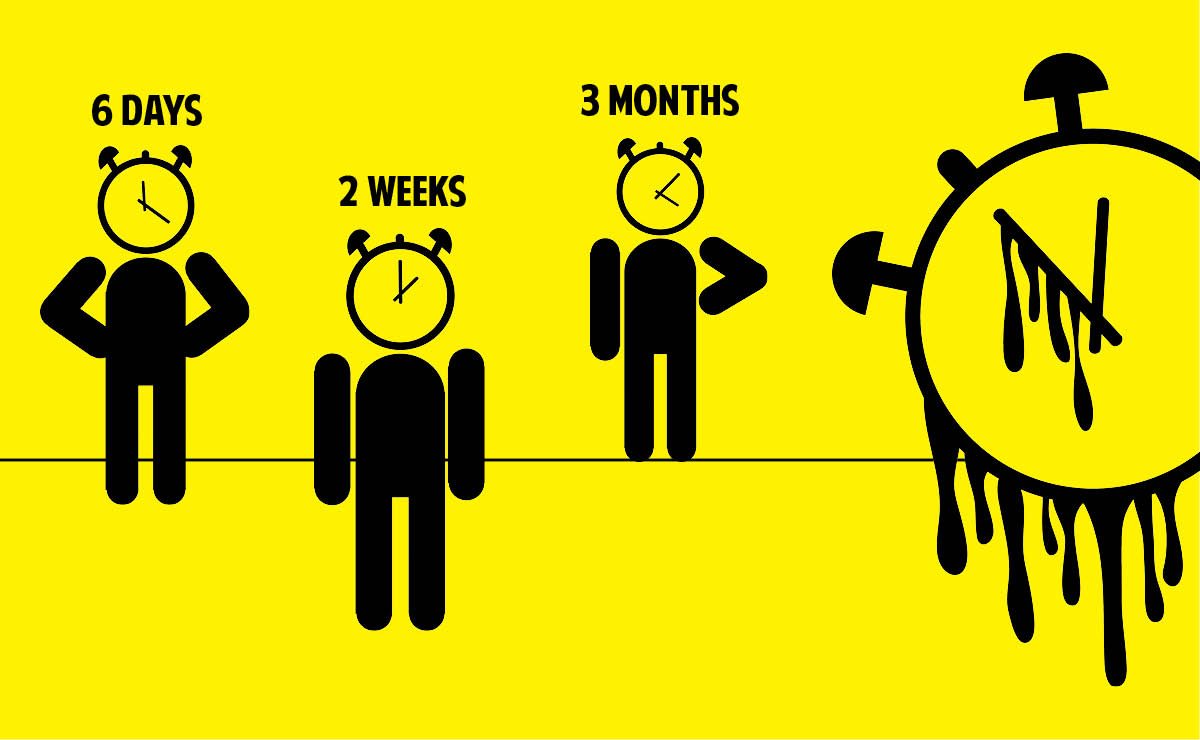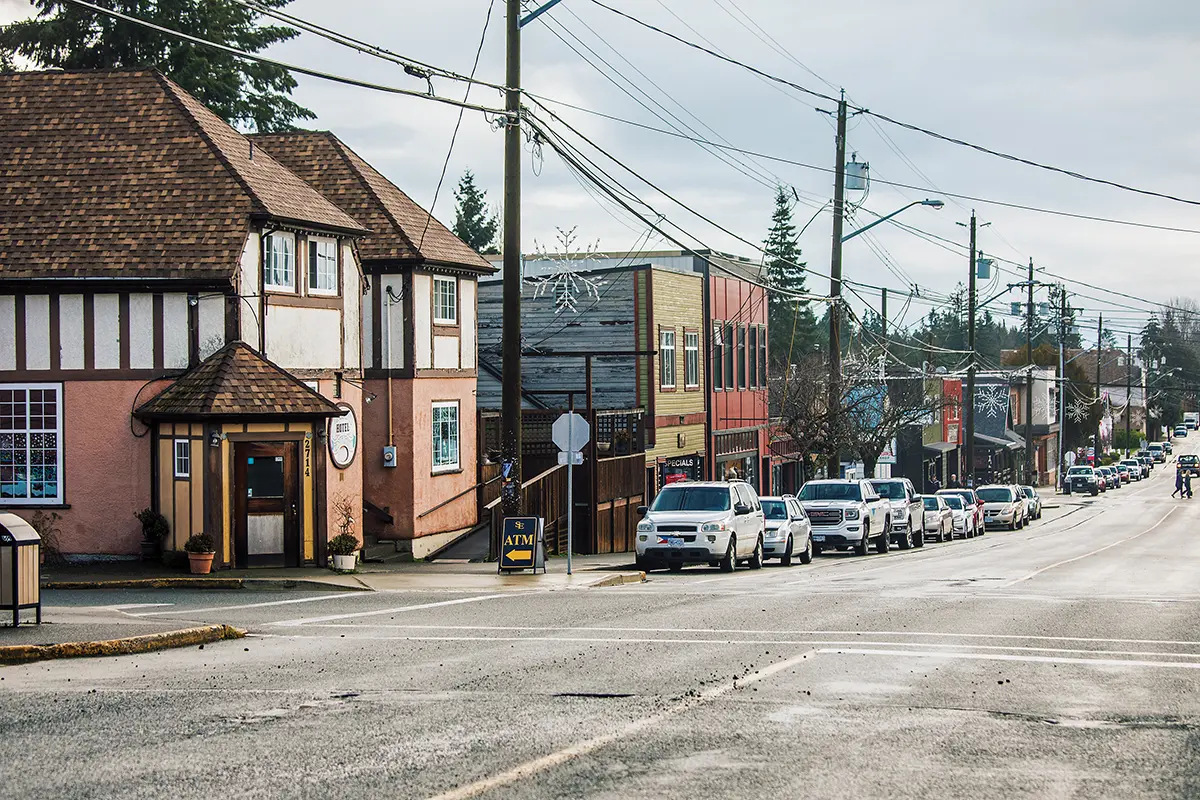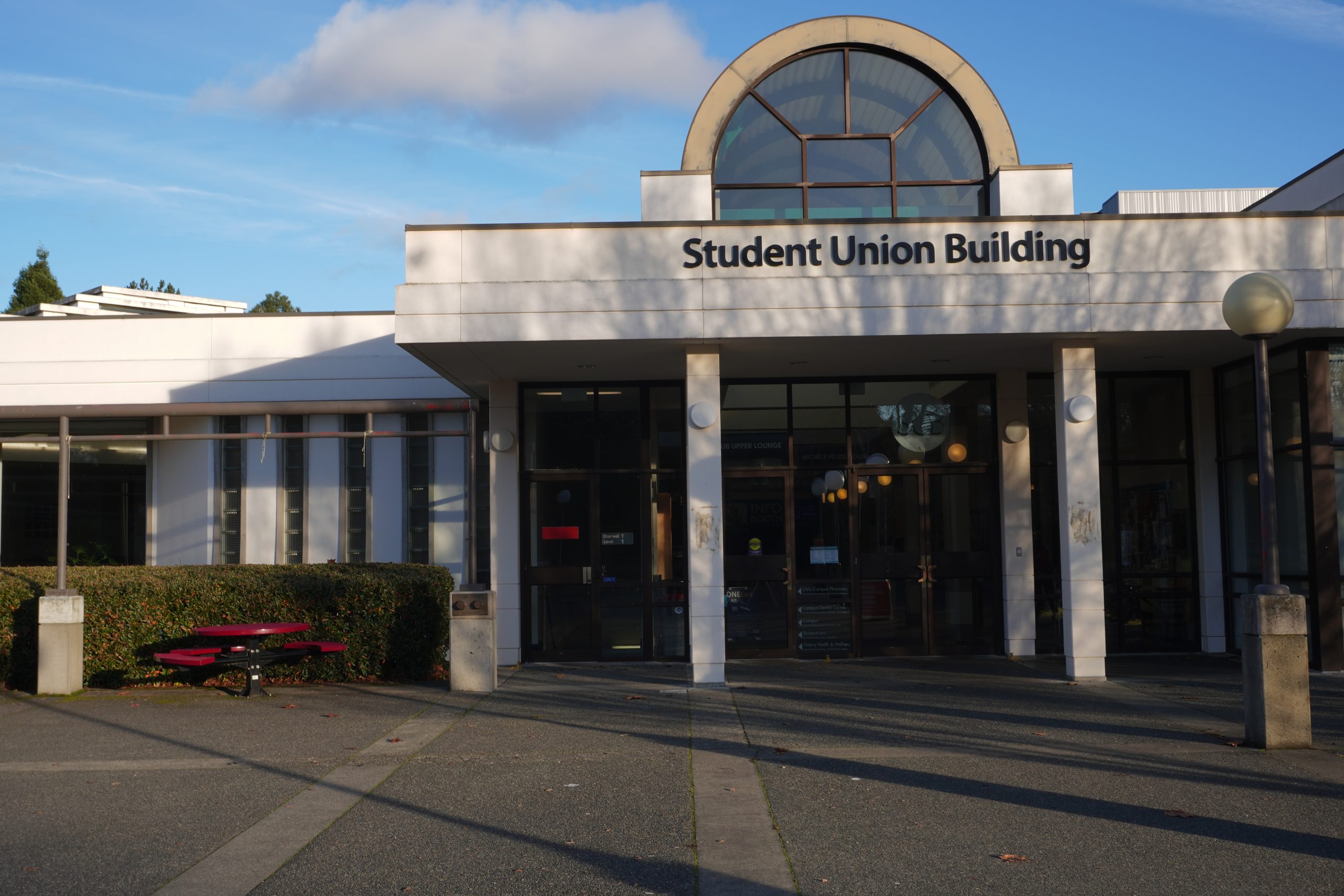[pullquote]“I went in and explained everything. After ten to fifteen minutes the counsellor says, ‘Sounds like you’re dealing with a lot right now. Let’s book a meeting in January and look at that.’” This was early November 2016.[/pullquote]
“Last term I was having a rough time. My social network collapsed, my best friend moved away, and I went into a serious depression, and then an anxiety disorder emerged.”
So says a UVic student, speaking anonymously with the Martlet on the issue of accessibility and UVic Counselling Services.
“When I went to Counselling Services, I had a backpack with a few days’ clothes in it. I was spending nights on campus because my depression and anxiety was so bad that I couldn’t handle being around my roommates.”
The student said they were given a same-day 20-minute ‘walk-in’ appointment, advertised as single-issue crisis sessions.
“I went in and explained everything. After ten to fifteen minutes the counsellor says, ‘Sounds like you’re dealing with a lot right now. Let’s book a meeting in January and look at that.’” This was early November 2016.
“Great, I thought, but this is happening right now” said the student. “At the time, the need for treatment was pretty immediate. I ended up not being able to go home for two weeks. My roommates were worried I was dead or something.”
“This isn’t an unusual story,” they said. “I’ve heard it quite a bit.”
In the past academic year, four University of Guelph students have died by suicide. “The demand for mental health services far outstrips the growth in enrollment, by roughly a four-to-one ratio,” wrote The Globe and Mail last month. Currently, only 13 counselling staff are the frontline assistance for the approximately 29 000 enrolled students at Guelph.
Guelph’s crisis has caused student bodies around the country to reassess their own mental health services.
UVic has roughly 21 200 students and 15 counsellors (five practicum, nine full-time, two Indigenous, and one psychologist), and while the services they provide aim to put students at ease, the long waitlists have created a cause for concern.
Getting a spot
According to its website, UVic Counselling Services offers “free, professional, confidential, inclusive support to currently registered UVic students.” If a standard hour-long appointment is not available, students are invited to wait in the University Centre Office around midday for the chance to attend a 20–25 minute appointment for urgent concerns.
However, these spots fill up quickly, and students will often camp out earlier in the day to snag a walk-in appointment. Alternatively, students seeking appointments are invited to call at 8:30 a.m. in the hope of filling a cancelled appointment.
“It’s about 70 per cent of our students who access counselling through the walk-in [appointments],” said Rita Knodel, director of Counselling Services. With these appointments, the office has seen significantly less wait times than in the past.
While some students have reported waiting weeks or even months to get in for an appointment, Ai-Lan Chia, associate director of Counselling Services, says that these reports are “myths” that are discouraging students from booking.
However, on March 1, the Martlet visited Counselling Services and was told the next available appointment was “early April.”
According to the data collected at their office, the average wait time for an appointment, not including weekends and holidays, is 13.6 days. The lowest average was 8.85 days in May 2016, and the highest was February of this year at 18.56 days. However, this number does not include same-day walk-in appointments.
From May 2015 to April 2016, the office held over 4 941 counselling hours, 22 per cent of which were same day and pre-scheduled appointments. Additionally, over 77 per cent of students who booked appointments went an average of one to three times in the last calendar year.
With the oncoming stress of exams and final projects, the office reports that March and November are their busiest months. However, they still say appointments go unfilled at this time, so students shouldn’t hesitate to call if they need to see a counsellor during the final weeks of each semester.
One-on-one counselling services, as well as partnering with other student-led initiatives, are one solution for long waitlists and providing students with alternative means of support. In addition to traditional counselling services, the Counselling Office provides a number of other groups and holistic options to improve student health, including career exploration, cognitive behavioural therapy for anxiety, panic attacks, depression, grief and loss, and mindfulness-based stress reduction.
“A lot of the stress that’s here [at university] is manufactured,” said Knodel. “And it puts all students under these pressure cookers, that really, no wonder people have symptoms.”
Students helping students
Increasingly, university students are turning to their unions for additional mental health support.
While the current UVSS Board of Directors starts packing up their offices to make room for a new board, Maxwell Nicholson, current UVSS director of campaigns and community relations, says he’s proud of the work done through the UVSS ReThink Mental Health Campaign.
“One of the things I think that has been a really big success about it has been the collaboration,” Nicholson says. “We’ve worked really closely with the Office of Student Life, [and] we’ve been able to have a really strong student society influence on the way that they run.”
The UVSS hosted a Mental Health Awareness Week back in January 2017, which featured events such as TED speaker Kevin Breel, and a Run for Your Brain event. Working in tandem with the UVic Student Mental Health Initiative as well as Bell Let’s Talk, the campaign sought to bring awareness to mental health issues and resources for students both on and off campus.
In total, the UVSS spent $5 590 on the ReThink Mental Health Campaign, slightly less than the $6 360 budgeted, with a majority of the funds going towards things like bringing Breel to campus and promotional material such as Frisbees, stress balls, and other materials for the campaign. A majority of this funding came from a $3 000 sponsorship from Student Care, and a $3 500 sponsorship from Bell Let’s Talk.
While Nicholson says the week’s events are successful in raising awareness, he also knows these are just temporary solutions, citing that the real goal would be putting more funding into counselling services at UVic. However, the UVSS has little influence other than in lobbying the government and putting on campaigns.
“I think the student society’s role . . . is to really devote our resources into showing the importance of [mental health services] . . . with the hopes of getting larger funding from the government,” says Nicholson. “I don’t think the burden should be on the student society.”
However, one thing that the society can do is work on better health packages for students that cover different counselling options. For example, this year the student care
health plan has expanded to include video chats between a counselor and a student. Currently, the plan covers up to $700 a year for psychology services outside of campus, on top of the six free sessions student are entitled to through UVic Counselling Services.
Nicholson knows there’s always work to be done, and anticipates that the new board will continue to work for student’s mental health in collaboration with other university’s student societies and a continual partnership with the UVic Student Mental Health Initiative.
“If there’s a need, they see the need stronger than any,” said Nicholson. “If you’re in an organization that doesn’t have resources or are one of the front -line workers, you’re the one that knows it better than any.”
Alex Sterling, who works with the UVic Student Mental Health Initiative and Division of Student Affairs, says that while the initiative offers many opportunities to supplement Counselling Services’ traditional one-on-one sessions, the biggest barrier in helping students is the stigma surrounding how long it takes to get into the system.
“It is always worth still going into Counselling Services,” said Sterling. “Don’t just assume it’s going to take forever just because that’s what you’ve heard through the grapevine.”
The Student Mental Health Initiative’s mission is to break stigmas and promote awareness of mental health issues on campus. This year the initiative has had success pushing their usual Mental Health Awareness Day to a full week, and continues to host peer-peer workshops run by student leaders throughout the 2016-17 academic year.
“I think ideally, [the goal] would be, for our services, anyone who needs support can access it. But then there’s also culture of support across peers, faculty, and staff as well,” said Sterling.
The cost of support
The overall operating budget for Counselling Services in the 2016-17 year was $1.213 million, $1.185 million of which went towards labour costs for the 15 staff members.
“We are trying to find ways that we can bring professionals to our centres that can expand our capacity,” said Ai-Lan Chia. To do so, the counselling office plans to hire a pre-doctoral intern in August to both help students, and assist the intern in their dissertation.
However, according to Rita Knodel, what the issue really comes down to is office space, rather than the cost of boots on the ground. The counselling office can only do so much with the space and monetary resources they have.
“We mostly need an office for counselling, and it’s hard enough to do without space,” said Knodel. Currently, the five practicum counselors have to share office space, therefore leaving less one-on-one time to connect with students, and putting a limit on the number of hours the office can schedule.
In its most recent 2016-17 budget framework, UVic committed an allocation of $1.32 million towards “continued enhancements to the student experience including . . . student mental health, advising, and counselling services,” according to Paul Marck, UVic media relations and public affairs officer.
Of this $1.32 million, $146 000 was allocated to the Office of Student Life and their many programs such as Mental Health Literacy Program training, student-focused/led mental health programs, the student mental health blog, the annual Mental Health Awareness Week, and labour for the office.
Searching for solutions
Although UVic, the UVSS, and community members continue to find ways to increase support for mental health services and programs, this still isn’t enough for some students.
“I didn’t know where to go. I was debating using a crisis line,” said another UVic student who also wished to remain anonymous. He experienced a mental health crisis and contacted UVic’s Counselling Services. “I made an appointment around Feb. 20 for a month later. It seemed pretty long.”
“There are not enough counsellors for the amount of students we have at the school. Plain and simple,” he said.
UVic is not unique; the public health system is buckling under the strain of a nationwide need for mental health support. Although private counselling is readily available, it’s affordable for few, especially students.
Here are a few options based in Victoria:
- The British Columbia Association of Clinical Counselling (BCACC) prices individual therapy sessions at $120 for 50 minutes; a poll of several Victoria-based counselling services found this figure to be the standard.
- The Citizens’ Counseling Centre bills on a sliding scale correlating to income; for an income of $10 000 to $15 000 per annum, one is charged $15 per session. Earners under $10 000 pay $10.
- UVic employees and their dependants can access free on-line, telephone, and in-person counselling through their Employee and Family Assistance Program.
- Free counselling is available to specific demographics including AIDS Vancouver Island, the Vancouver Island Health Authority’s Addictions Outpatient Treatment, Women’s Sexual Assault Centre and the Single Parent Resource Centre.
- The Military Family Resource Centre and Men’s Trauma Centre provide low-cost to no-cost services, and the Salvation Army offers free counselling. The Mental Health and Services line provides navigation and referrals to Victoria’s public services.
The frontline workers of Counselling Services know that students need their services, and hope that students will continue to reach out to them.
At UVic, the issue is the volume of help available, not the quality of the counselling itself, which the second student we interviewed described as “excellent.”
“I’ve connected with my counsellor really well,” said the UVic student who waited a month for their initial appointment. “The counsellor, the doctor, the mental health nurse are all awesome at their jobs . . . There’s a lot of people here looking to help students, it’s just that it’s hard to process that many people who also happen to be at a high stress part of their lives.”
“The only reason I got in was that I told them it was an emergency and because they had a cancellation. I was lucky,” they said.
And had they been told to wait longer? “I don’t know if I would have made the meeting.”
Money is continually added to the pot for mental health strategies and services; however, it’s up to students to demand better care in the hopes that services can be increased. The counselling office is always taking feedback on their website via their contact page, so students can anonymously submit suggestions to better help students.
Overall, the money won’t talk unless students do first.
If you need support, consider contacting the following:
UVic Counselling Service: 250-721-8341
Vancouver Island Crisis Line: 1-888-494-3888
Citizens Counselling Service: 250-384-9934
UVic’s Employee and Family Assistance Program:
1-800-663-9099
Mental Health and Services (VIHA): 250-381-3444









